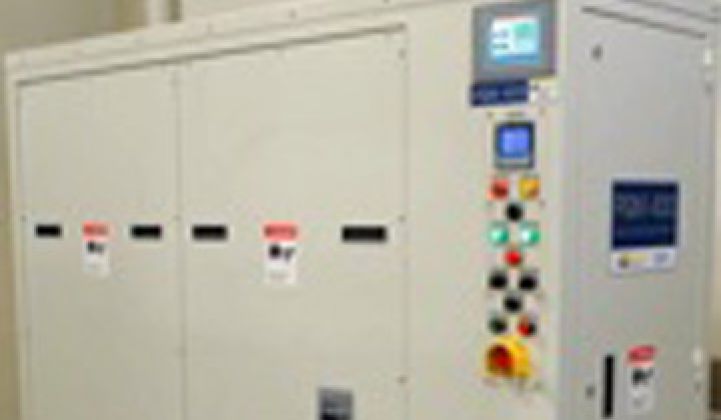Validus DC Systems -- which has created equipment to run datacenters on DC rather than AC power -- has amassed an impressive array of statistics on how DC power can drastically reduce energy consumption.
A DC-powered datacenter is 10 percent more efficient than a state-of-the-art AC datacenter and 20 percent more efficient than a standard AC datacenter because of the fewer number of conversions incoming electricity must endure before it powers a server or storage system, according to Ron Ranaldi, vice president of sales.
Additionally, The purchase and installation cost of DC equipment is around 30 percent to 35 percent less. Further reductions can be achieved by putting datacenter air conditioning systems on a DC line.
But the biggest savings come in floor space. A DC datacenter requires 25 percent to 40 percent less square footage than their AC counterparts, largely because computer equipment can connect directly to backup batteries. Rooms full of uninterruptable power supplies (UPS) and other equipment aren’t needed.
In a hypothetical example, a 2.5-megawatt data center power module in the AC world might need 7,295 square feet, he said. An equivalent DC power module might occupy only 5,102 square feet, a savings of 2,193 square feet. What's more, a single datacenter might consist of several 2.5-megawatt modules.
Those lower lease payments, taxes and employee costs add up.
“Real estate is often greater than the energy savings,” he said. “In large, green field data centers, you are literally eliminating buildings.”
“With 1 megawatt (datacenters) and above, the Day 1 costs are better with DC than AC,” he added. Less equipment and fewer components also cut maintenance headaches.
Whether you’re a skeptic or a believer in the power of DC, the opportunity to test these numbers is coming. Companies such as JPMorgan, Sprint, Boeing, and Bank of America have built DC datacenters already. SAP told us last month its DC data center saves $24,000 a year.
In the latter part of 2010, however, IBM, Hewlett-Packard and the other major server vendors have agreed to produce servers that can accommodate direct DC power. Power supply companies also signed on in the last few months.
In turn, that has prompted a number of large companies to commission similar projects, or at least to study the feasibility of DC datacenters.
“The designs are underway,” he said. “The big issue was ensuring that the big vendors would have DC servers. The chasm was crossed a few months ago.”
General Electric has partnered with Validus. In fact, Validus’ equipment carries the ecomagination label, typically reserved for GE in-house products only.
Other companies such as Nextek Power Systems have also devised equipment for DC datacenters and even for running lights in office buildings on DC.
The Secret Sauce
So how does it work? Validus’ primary products are its power quality and power distribution modules. The power quality module converts high voltage AC power from the grid (or generators) and converts it to the DC voltage desired, typically 380 or 575. The power can then be fed directly into servers or storage devices or fed to another converter that drops it to the 54-volt range. (Traditional telco equipment runs on 48-volt DC.)
In the end, that means only one or two conversion/rectification steps. An AC data center converts/rectifies power five times. Fewer conversions mean greater efficiency.
Traditionally, however, DC power equipment had to be sized to accommodate the requirements of low voltage equipment. If a datacenter had batteries with a 38-volt cut-off level, the room was designed, effectively, around it.
The lower the voltage, the higher the current. The higher the current, the wider the diameter of cable connecting it. As a result, the concept quickly spun into a wiring nightmare.
“You had to size copper for the lowest voltage point,” he said.
By converting AC into DC at the gateway to the datacenter and then distributing DC in datacenters at higher 380 volt to 575 volt levels, the fat cable problem goes away. If equipment needs a lower voltage, voltage gets converted downward right next to where it gets used. In fact, the total amount of copper wire required in large datacenters declines over AC because DC travels through the full diameter of wire, rather than the edge.
The company spun out of DSA Encore, but some of the power distribution and voltage management techniques come from MIT, which devised some of its DC management technology for the military.
“Submarines, aircraft carriers -- they're all on DC,” Ranaldi said, adding that CIOs with a military background are often receptive to the DC datacenter concept.



